Are you looking to clear out all of that outgrown baby gear, those Rubbermaid tubs full of too-small clothes stacked up in your garage, that toy box crammed full of toys that are never played with anymore, those dinnerware sets collecting dust, or that bookshelf that is busting at the seams? Are you dreaming of getting some living and storage space back? Well, before you chuck it all in the trash or bag it up for the donation trucks, how about making some easy spending money while you purge?!
There are groups on Facebook dedicated to Buying, Selling, Trading, or Donating your unwanted items. Some groups are general “yard sale” groups where you can post anything (legal) that you would find at a neighborhood yard sale: dishes, pots & pans, clothes, toys, books, fishing poles, knick-knacks, tchotchkes, brick-a-brack, and the like. Other groups are dedicated to more specified types of items: baby gear, toys, books, vintage wares, upcycled furniture, home decor, sporting goods, etc.
These groups are fabulous as you can sell your unwanted items with less hassle than a yard sale, more profit than a consignment shop, and without all the crazy you find on Craigslist!
If you’ve never been a part of a Facebook BST group (or are unfamiliar with the new selling features), this post is full of tips to get you started clearing out the clutter and raking in the cash!
Protect Online Privacy
To help protect your online privacy, you can set up an alternate (anonymous) Facebook profile or just check the privacy settings on your personal profile. Some groups will not allow members to have a generic profile photo or will need to verify your profile before adding you to the group (they are looking for your current city mostly). This helps to weed out the spammers and others that may be lurkers. Avoid sharing your personal email address and phone number. Set up an alternate email account or use Facebook to send private messages to buyers.
Search for Groups
Use the search bar on Facebook to search for local selling groups. You can type in your city or neighborhood names and words like “yard sale”, “garage sale”, “buy, sell, trade”, “resale”, “exchange”, or “thrift”. If you live in a small town, you can look for groups in a larger nearby city. If you work out of the area or in a different city, search for groups in those areas to broaden your customer base (you can meet up with buyers at lunch time or on your way home). If you know the nicer (more affluent) areas of your community, try searching for groups in those areas. You will see a great difference in the types of items listed for sale, the quality, and the pricing.
Read the Rules
Some groups have very specific rules or none at all (all determined by the group administrators) and every group is run differently. You can usually find the group rules on a “pinned” post at the top of the group page, or listed in the group description. Here are a few of the things you need to be aware of before posting any items for sale:
- Geographical Boundaries – Are you willing to meet buyers in the group’s listed ‘territory’? Is a $3 item really worth traveling for?
- Determining Buyers – What type of response will hold a buyer’s place in line? Do they have to explicitly say “I want to buy this” or is “Interested” good enough.
- Wait Time – How long do you have to wait for a response from a buyer before you can move on to the next person? Or can you post items ‘First come, first served’?
- Post Limits – How many items can you list per day? How many times can you ‘BUMP’ your posts to the top of the feed?
- Advertising – Is the group ad heavy? If the feed is nothing but business ads and very little sales posts, you may have trouble selling your items.
And some general common courtesy rules:
- Take the line of buyers in order. Don’t skip to the next person in line (or choose at random) until you have waited the minimum amount of time required for a response.
- Don’t allow any bidding. A lot of popular items tend to go quickly (especially around the holidays) and you may find yourself with buyers willing to pay over the asking price. Be fair and stick to your posted asking price.
- Be as honest as you possibly can in your descriptions. Standards of condition are very subjective and opinions can vary widely. As a guideline, if you would not pay good money for the item in its current condition, don’t expect others to either.
Know the Lingo
There is often a ‘secret’ language spoken when something is trendy – think texting or couponing or teenagers – and online sales forums are no different. Learning to decipher and ‘speak’ the selling code will help you facilitate sales with the pros!
- ISO (In Search Of) or LTB (Looking to Buy) or WTB (Want to Buy) or IDSO (In Desperate Search Of) – a person looking for a particular item. This is a great way to make a sale. You may have the item laying around ready to sell!
- Cross Posted – the item is listed on multiple sites. This lets buyers know they may not be first in line.
- FSOT (For Sale or Trade) – seller is willing to take a trade in exchange.
- FCFS (First Come First Served) – the seller will not go in line order, but will sell to the first person that can pick up.
- BUMP (Bring Up My Post) – commenting on your own sale posts with “BUMP” or “.” or “Still Available” causing the post to be pulled back up to the top of the feed.
- Int or Interested – someone wanting to buy an item listed and is waiting for the seller to contact them regarding pick up.
- Pos. Int (Possibly Interested) or ‘Interested depending on…’ – someone wanting to buy, but only after questions are answered or information in the description is clarified.
- Next or NIL (Next In Line) – somebody has stepped in line to buy.
- Pass – the buyer is passing on the item and is no longer interested in buying. The seller should go to the NIL.
- OBO (Or Best Offer) – seller is willing to take a lower offer from asking price. So, if the item is priced at $35, the seller is willing to take an offer lower than that. It does not mean that buyers can bid higher to win the item nor should a seller refuse the first buyer’s lower offer in favor of a slightly higher offer from the NIL. Give the first buyer a chance to meet the other offer or pass.
- MMARO (Make Me A Reasonable Offer) – similar to OBO, the seller is open to haggling.
- Name Your Price – this is a tricky one. Some sellers have no idea how to price an item or are just looking to get rid of it quickly. It can be hard to make an offer though as opinions on value may vary greatly.
- No Low Balling – a seller is not interested in offers way below asking price. If a TV is listed for $125, an offer of $20 would be considered ‘low balling’.
- EUC (Excellent Used Condition) – the item is in great condition with no visible wear or damage.
- New, NWT (New with Tags), NWOT (New without Tags), BNIB (Brand New in Box), BNWT (Brand New with Tags) – an item is brand new, as you would find in a store, giftable.
- GUC (Good Used Condition) – the item is in fair condition, there may be visible wear or damage.
- Used Condition, Play Condition (for children’s clothes) – the item is used but still has life left.
- PM (Private Message) – a message sent via Facebook’s messaging system.
- PPU (Pending Pick-Up) or Pending – the item is sold pending pick-up. It is helpful to the NIL’s to mention when the item is scheduled to be picked up: “PPU Friday afternoon”.
- PPU (Porch Pick Up) – PPU can also mean that a seller prefers to arrange for items to be picked up from the front porch of their home. Items are left out and money is left in a designated spot (mail slot, in a planter box, or under the door mat).
- Sold – the item has been sold and is no longer in the seller’s possession. It can be helpful to leave a “sold” listing up for a day to let the NIL’s know that the item they were hoping for is gone.
Photograph & Organize items
Check that all pieces are accounted for, find instruction manuals, test battery-operated or electronic items, look for torn pages, wipe down shelves, wash/fold clothes, dust screens, etc. The more attractive the items appear, the better the chances are to sell at asking price.
A really good photo will help to sell your items faster. In fact, many groups will not allow a stock photo taken from the Internet to represent what is being sold. Take photos in good lighting and try to get as many shots at different angles if necessary. It always happens that somebody wants to see more photos and you have already packed everything away! Photograph any noticeable imperfections (discoloration, chips, scratches, etc.)
Price Items
The whole point of selling items online is to make good money on purging your junk! Ha! You could host a yearly yard sale, but Saturday morning shoppers have a set price range in mind (usually $5 or less) and they will expect to buy an armload of things and pay as little as possible for it all. You could just chuck all your unwanted junk at the nearest donation center and take a small tax write-off and be done with it. Or you can invest a little bit of time and effort and make some cash on your clutter stash.
If you are wanting to make online selling worth your while profit-wise, you’ll have to do a bit of research on pricing your items. You want to recoup some of your purchase investments but still offer a fair deal to entice buyers. You can check current retail prices (Amazon or ebay are good bets) and pay attention to how much similar items are going for in Facebook groups. Keep in mind that everybody likes a good deal, so be prepared for hagglers! Add a little wiggle room to your price so if you agree to lower the price a bit, you are not taking a big hit on the profit you are expecting.
Posting your items
At the top of the group page, click on the “Discussion” tab and then click on “Sell Something“.
Try to group together ‘like’ items. Books, toys, shoes, dishware, movies, tools, etc. This keeps the buyers focus if they are looking for specific items to purchase.
In the “What are you selling?” box, you will create a general title of what it is you’re selling – TOYS, FIESTA WARE, LEVI’S, YARD TOOLS…
Enter your price in the “Add Price” box. If you are listing multiple items with varying prices in one post, you can list the lowest price or an average price.
List your location. Your zip code/city should automatically be listed, if not add it in. If you live in a large city or are posting in a group that has a wide territory, you can be a little more specific with your location in the description box at the bottom (near the university; across from the hospital, near Maple Ave & Windsor Drive). This will give buyers a better idea of where the item is and if it’s worth the trip to purchase it.
You can add photos to each “For Sale” post. I have found the best way to maximize visibility is to add no more than 5 photos to the post. All 5 photos will be visible and the buyers will not have to sit and click through a million different photos just to see what’s for sale. To add photos, click on the box that says “Add Photos” and select photos from your phone or your computer’s hard drive. (If you are doing this on a mobile device, you will also have the option to edit each photo as they are uploaded. Add text, crop, or draw on the photos to help clarify the description.)
In the “Describe your item” box, you can list the various items you have for sale in the post along with the price for each item.

Be as honest as possible with item descriptions. Make note of visible wear or cosmetic damage. If the item is electrical or battery operated, be sure it is functioning well before you list it. You can also mention if the items come from a smoke or pet free environment.
List your selling conditions if you have any. You can mention that you are not willing to hold for a long period of time, what kind of pick up you prefer, if the item is posted in multiple groups, and where you are willing to meet the buyer.
You can post your sale listing in multiple groups. Just click on the box near the blue “post” button to see the list of groups you are a member of and select the groups you want the post to appear in. This is such a huge time saver; the only downside is that you cannot edit, delete, or comment across the groups. Each and every post must be handled separately!
Update & Manage Sales Posts
You will need to check in on Facebook regularly to update and manage your sales posts – in fact, the more often you can check in the better chance you will have of catching buyers while they are still online and arrange for a fast pick up. Facebook will send you a notification whenever there is a comment or “like” on a post or when somebody sends you a message.
Facebook does not make it easy to find messages from people you are not ‘friends’ with. Go to your message folder and click on “Message Requests” to see new messages. (If you use the Facebook Messenger app on your mobile device, I don’t believe there is a way to see this. You will have to use the “desktop” version of Facebook.) If you still cannot find the message (or you’re on a mobile device), try sending the buyer a message and any message they have sent to you will pop up.
Be prepared to answer any questions and to keep track of who is in line to buy, especially if you have the item listed on multiple sites (you can go by the time stamp under each comment if you are ever uncertain of line order, but it gets tricky when there is a number of lines to manage).
You can edit your sales posts by clicking on the little gray chevron in the upper right-hand corner of the post.
You can easily find and view a complete listing of all of your sale posts by clicking on the link in the blue box found at the top of the group page.
If you mark a post as “sold”, it will still be visible on the group page, but the listing gets moved to the “sold” category. If you want to “archive” a post and try listing it again later on, you can opt to “archive” it. Some group admins will automatically archive old posts after a certain amount of time. Facebook will send you reminders to mark items as “sold” or to archive or delete old posts.
From the listing view, you can easily see the groups where each sale post is listed and you can edit each post. (Note that Facebook has not made things quite so simple with editing posts in multiple groups. You have to go to each and every post in every group to edit. Hopefully they will create a way for universal editing soon!)
Choose a Safe Meeting Place
Unless you know the buyer personally, I would avoid meeting buyers at your home. There are just too many things that can go wrong. Some people opt for a “porch pick up” (where the items are left on the front porch of your home and the buyer leaves the money in the mail slot or under the door mat). This may seem like a convenience, but then again, you have just advertised that you leave items out in the open unattended as well as where the cash is hidden. Numerous sellers have had items or money stolen from their porch and it can create a huge cloud of suspicion when an honest buyer shows up and something is missing.
If you live in a gated community, you can offer to meet the buyer in the leasing office, near the community building, or at the front gate. Otherwise, choose a safe public place to meet up – a grocery store, Starbucks, gas station, playground, restaurant, the library, at church, or even the lobby of the local police station. (I like to choose a meeting spot where I plan to be anyway. That way, if the buyer doesn’t show up, I haven’t wasted my time driving around town.) Meet in day light hours in places that are busy. You can also text or call your spouse or a friend before and after the sale to let them know you’re okay.
All Sales Final – Buyer Beware
Always, always, always – every single time! – be sure the buyer looks the items over before you accept any payment. If you are leaving items out on the porch for pick up or are sending hubby to meet a buyer, you can remind the buyer while making pick up arrangements to check the items over before buying.
The buyer should open DVD cases to inspect discs, check the bottoms of shoes for wear, smell for cigarette smoke, look for holes or stains on clothing, if the item is electronic or takes batteries – ask to plug it in or bring along fresh batteries to test.
This is just an extra precaution to avoid the after effects of a bad transaction and being blasted in the group for being a bad seller. Perhaps you overlooked a small cosmetic imperfection that would to another person equate to the item being “damaged”. Condition is very subjective, so a thorough review of the items is worth the extra few minutes of everyone’s time.
Dealing with flakes
It’s part of the process. You will get those buyers that ask eleventy billion questions and for a price reduction (and then say “pass”), ask for a bundle deal, ask you to meet them at a location closest to them, and you will get “flakes” – somebody that doesn’t show up to make the purchase and doesn’t contact you at all regarding the flakeout. It can be extremely frustrating to deal with flakes as you not only have wasted your personal time waiting on a no-show, but you have held up the line for this buyer only to have them bail on you, and then you have the risk that the others waiting in line have lost interest and you end up losing a sale. I just had 5 flakers in a 3-day period and I get it. It totally sucks.
How you choose to handle a flake is completely up to you. Some may contact you later with a sad story (that may or may not be believable). Some (gutsy) buyers may ask to meet up again. And some you will never hear from again. If I don’t have anybody else in line (and the sale is big), I may offer them a second chance at picking up at a time and location of my choosing.
As a buyer, seller, and a group administrator, I believe that flakers should be reported to the group’s administrators. The flakes may be removed from the group or given a warning. (You can find the group’s administrators by clicking on the “members” tab, then click on “admins”.) Send the admin a private message with the name of the buyer and the details of what happened. If the buyer becomes a nuisance, you can block them via your privacy settings on Facebook. They will no longer be able to contact you or see your posts.
Do you use Facebook selling groups? What tips would you add to the list?
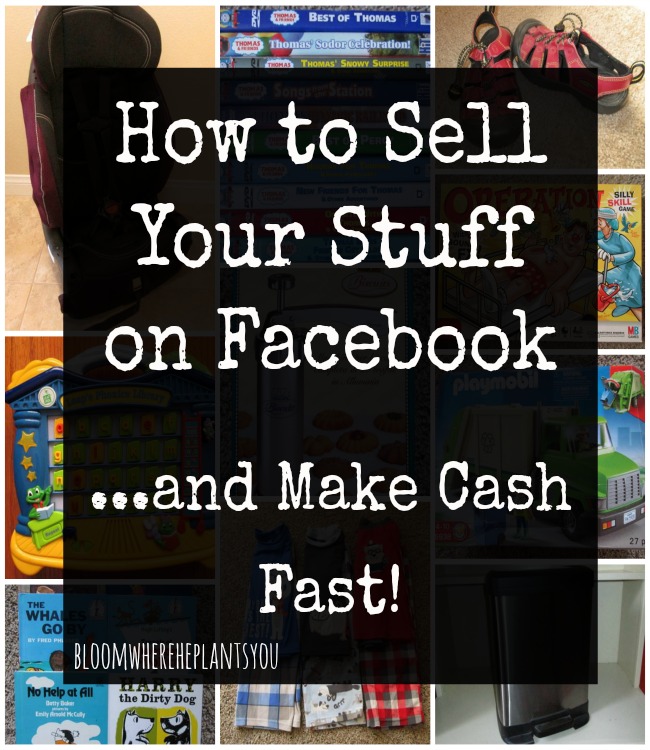

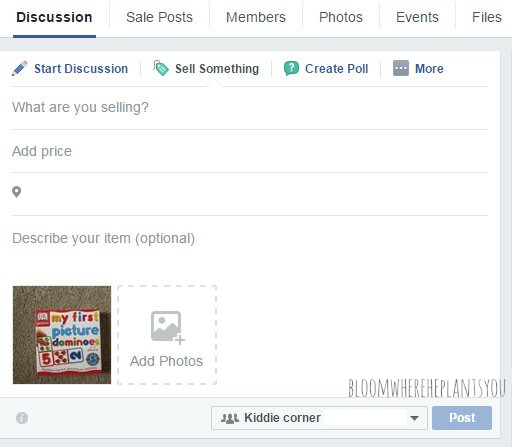
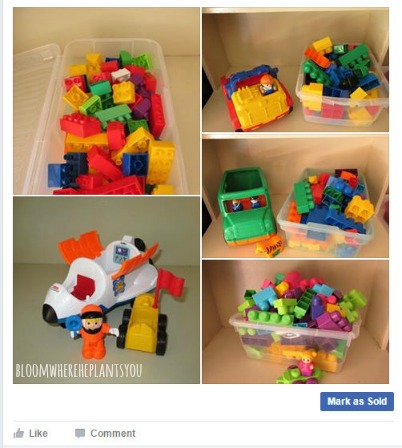

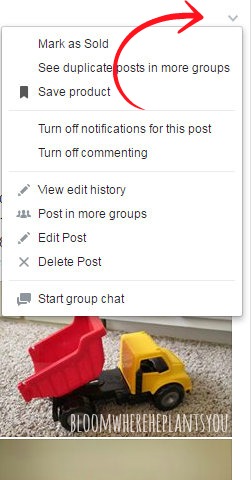

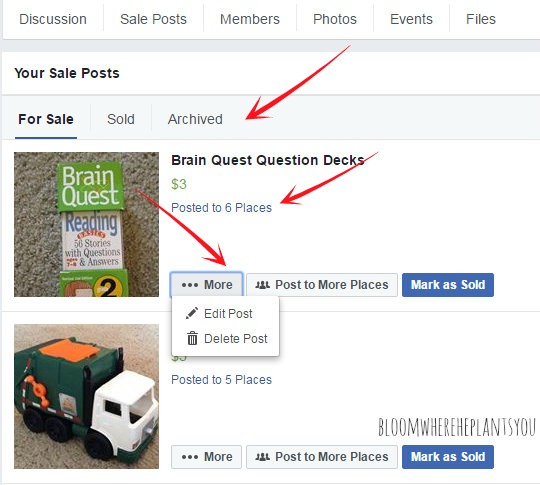

I’m looking forward to selling or buying on 716?
I feel pretty comfortable doing porch pickup, being that we have about 6 home security cameras, but what if a person were to grab the item and not pay? That’s still stealing, right? I can send the video to the police or just provide the info to the admins of the group?
How do you handle/manage/account for postage in your post? What’s the best policy/method to accommodate any shipping costs?
Hi I run my own auction group through Facebook we auction everything and anything nothing illegal all legitimate items. A lot of old coins or bills are also auctioned off but lately I’ve been getting notices from Facebook saying it’s illegal and my post has been deleted I no so many auctions on fb that auction money and have never had an issue. Please help I do well on old coins and bills. Why can’t I auction this